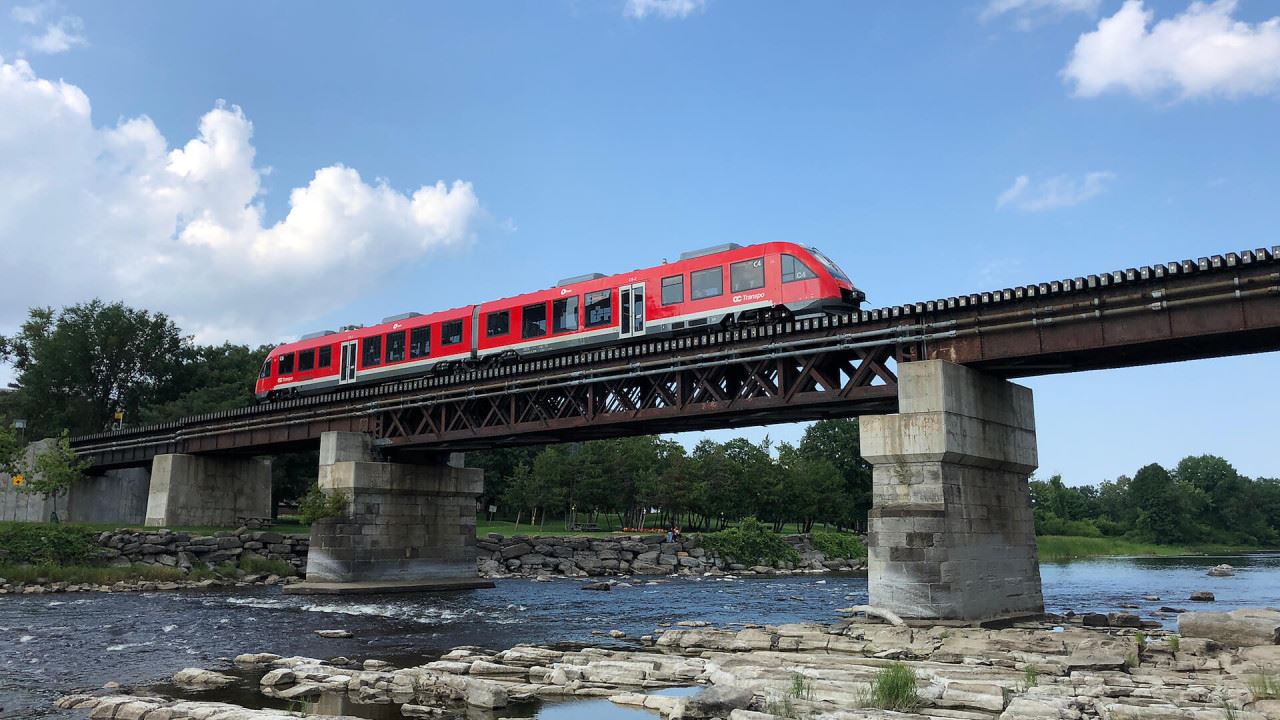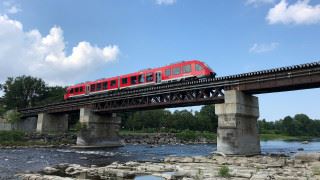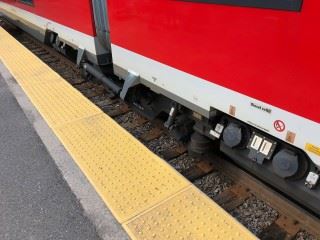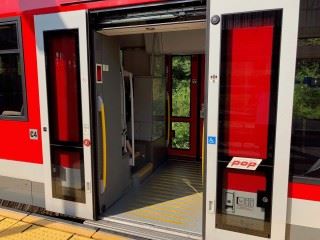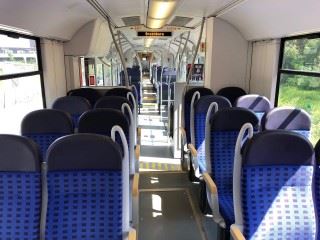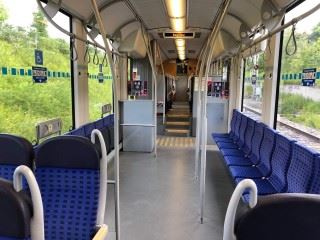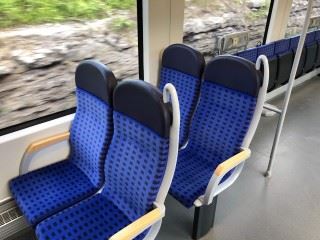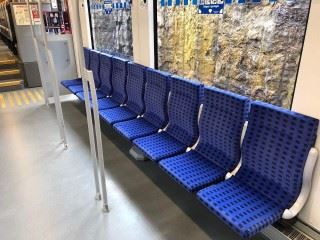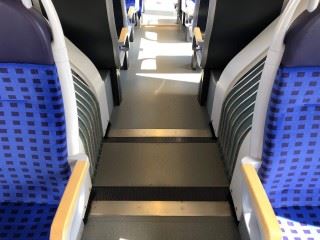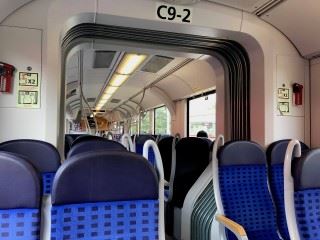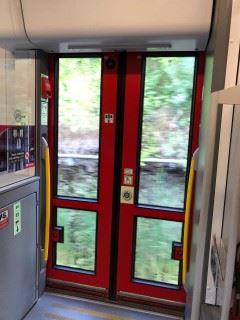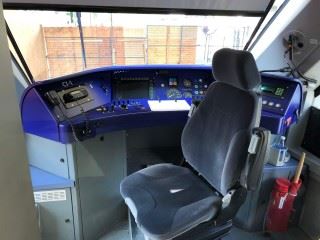The Alstom Coradia LINT 41 is a two-car articulated rail train built by Alstom. The acronym LINT is short for "Light Innovative Local Transport rail vehicle". These trains arrived in Ottawa in June 2013, and entered service on March 2, 2015, their entry retiring the original Bombardier Talent trains. OC Transpo operates 6 Alstom Coradia LINT trains on the Trillium Line. In regular service, 4 trains run concurrently along the line, with 2 trains kept as backups. The trains are stored and maintained at the Walkley Yard, just northeast of Greenboro Station.
The trains were acquired as part of a plan to expand and enhance service along the Trillium Line. After the inclusion of more passing tracks, higher frequency could be obtained on the line, with the addition of additional trains.
The Alstom Coradia LINT 41 trains are both more efficient in terms of fuel usage as they are with their lower emissions, and are more suited to the type of work associated with public transit, than their mainline predecessors. They operate on diesel fuel as the Trillium Line is not electrified. The powerpacks are rated at 2x390kW.
The trains feature a total of 4 doors, 2 on each side, allowing quick boarding and entry. The doors are activated manually by a button mounted on the doors themselves, both on the inside and outside. The doors will then open and close automatically a short time after if the entrance-way is clear.
Inside, the layout is spacious with large windows the entire length and a passenger capacity of 260. In the areas surrounding the doors, the floor is at platform level, while the ends and the middle of the train are reached by a couple steps (to allow space for the mechanical components underneath). The two cars are connected by means of an articulated joint and gangway, allowing free passage without doors from one car to another. In the summer, air conditioning is provided from vents in the ceiling, while in the colder winter months, heat is produced by baseboard heaters mounted along the length of the cars. The seating on the trains are blue cloth seats and are arranged such that half the seats are facing forward and the other half are facing backwards. The seating near the entrances are mounted against the windows, to allow extra space for passage and standies, as well as to accomodate wheelchairs, scooters or bicycles.
Automated voice messages and electronic displays mounted along the ceiling announce the next station and other important information.
Due to there being driver cabs at both ends, the trains will operate in the reverse direction once they reach the terminus of the line. As they are controlled by a single operator, that person will switch from one cab to another to restart the route in the opposite direction.
